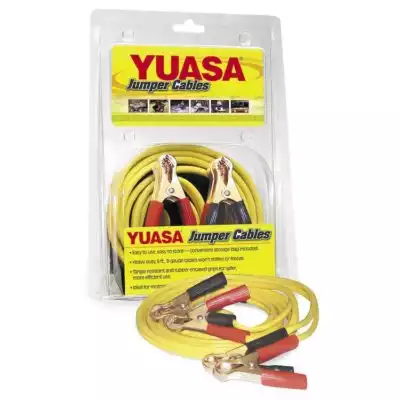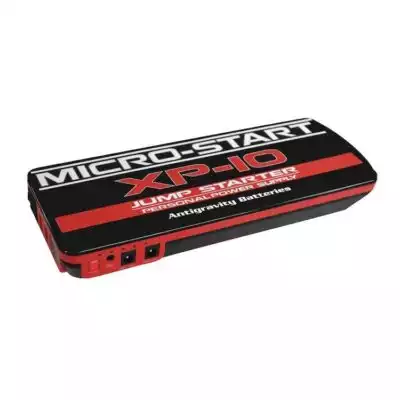One of the worst feelings in the world is rushing out to your bike, already running late, you press the start button, and nothing happens!
Or you get the click, click, click of the starter motor trying to turn over the engine but failing.
So can you jump-start your motorcycle from your car?
Yes, you can jump-start your motorcycle from a car. As long as both systems are 12 volts, there is no problem, assuming the car battery has enough power to start the bike.
Will this damage the motorcycle?
The simple answer is no!
If you Google jump-starting your motorcycle with a car, you’ll come across all kinds of dire warnings urging you not to do it. But is there any truth in these warnings?
The warnings are based on the fact that a car battery is far more powerful than your motorcycle battery, which is true. However, a battery is simply a power source. It supplies the power asked of it up to its maximum rating.
You are more likely to damage a motorcycle battery trying to use it to jump-start a car. This is because the battery attempts to supply the current demanded by the load – in this case, the starter motor.
A car battery trying to start a motorcycle is not going to struggle, but a motorcycle battery trying to start a car could easily be damaged by the excess current required by the car engine.
Will jump-starting your bike from a car damage the car?
You are very unlikely to damage your car while jump-starting a motorcycle unless there is something wrong with the car’s electrical system.
Your car has more than enough power to spin your motorcycle’s engine.
The correct way to connect the jumper cables
While in 99% of cases, there is never a problem attaching jump leads, you definitely don’t want to be in the 1% where something goes wrong.
Shorting a battery or causing a spark that ignites the gas emitted from a battery will ruin your day.
For the safest connection between batteries, follow this procedure;
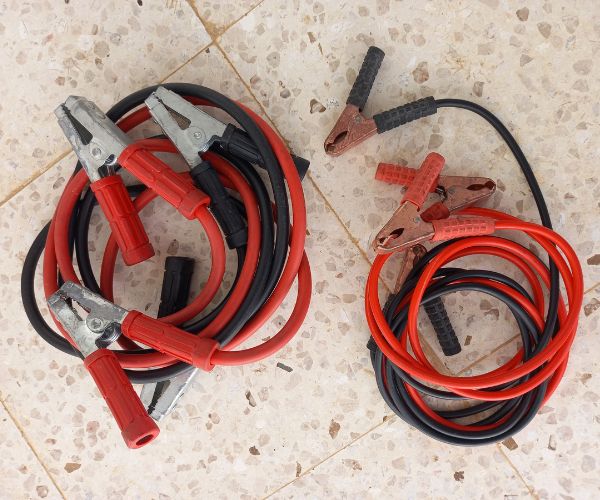
- Clip the red cable to the dead battery’s positive terminal
- Clip the red cable to the good battery’s positive terminal
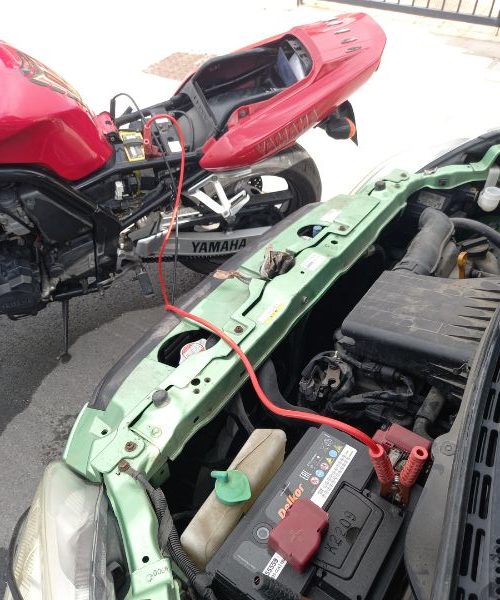
- Clip the black cable to the good battery’s negative
- Clip the other end of the black cable to the frame or ground of the motorcycle, as far from the battery as possible
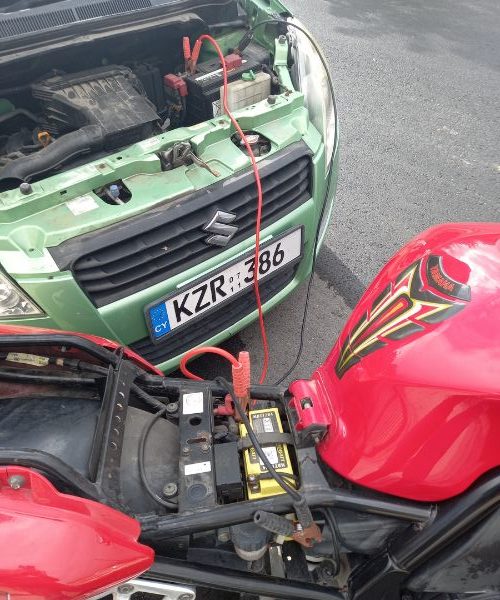
Following this simple procedure limits the potential for painful mishaps!
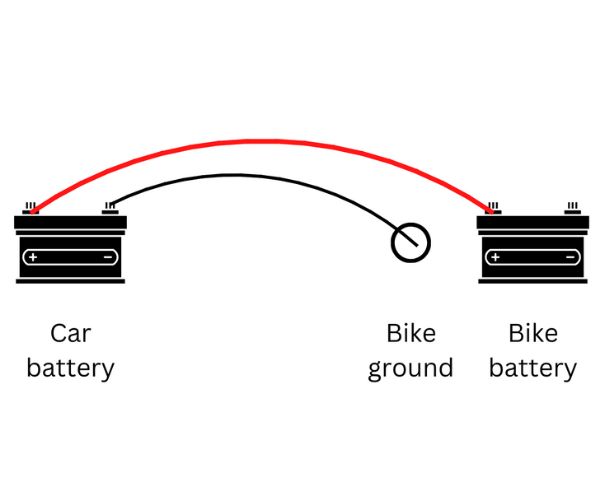
To disconnect, follow the connection procedure in reverse, disconnecting the negative bike cable first.
Use motorcycle-specific jump leads
Jump leads come in various sizes, designed to handle different current supplies. As you can imagine, jump-starting a large-engine car will draw a lot more current than jumping a motorcycle.
The main reason for using motorcycle-specific jumper cables is the size of the clamps.
Motorcycle batteries are much smaller than car batteries, and the terminals are much smaller. Attaching jump cables designed for a car may prove difficult on a motorcycle, particularly if the battery is hidden somewhere awkward to access.
These Yuasa motorcycle jumper cables are perfect for motorcycles, long and strong enough to jump-start your bike without being too bulky.
Should the car engine be running?
This is another myth you will see pop up. As long as the car’s electrical system is functioning correctly, there is no chance of damaging the electrical circuits.
Cars run on a 12-volt system, the same as most motorcycles. Trying to jump-start your bike with the car engine running is not an issue. Both the motorcycle and car charging systems are designed to regulate high currents or voltages.
Should I use a power bank instead?
If you’re nervous about using a car battery, you can use a power bank to get your motorcycle running again. The Antigravity Micro-Start power supply is an excellent piece of kit. Not only can it start your dead bike, but you can charge electronic items such as your phone.
When we are talking about power banks, in this context, we are looking at items designed explicitly for 12-volt systems. The power banks designed for 5-volt USB charging are only suitable if they also have a 12-volt output.
